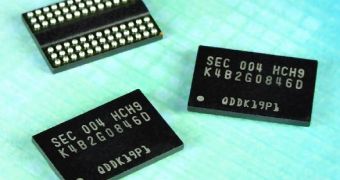After many months of almost constant downward price slide, the DRAM market has seen one of the very few recoveries, even if it is unclear if the trend will last for any significant period of time.
The semiconductor industry is a part of the IT industry that was hit fairly hard by the recession, though other factors were at work.
With the financial trouble around the world, a stronger emphasis began to be placed on affordability and energy efficiency.
As such, makers of DRAMs, CPUs, NAND and other chips did their best to advance to better manufacturing processes, which could allow for the densities and low power draw sought after.
Unfortunately, the speed at which Samsung, Elpida and all other companies moved to better nodes was too fast for demand.
Consumers simply could or would not buy new products at a rate capable to match supply, leading to overstocked inventories.
The worst began last year, around the start of the fourth quarter, and went on until the present day, with few and short reprieves.
Nowadays, memory modules are very cheap, enough that the standard capacity on desktops and laptops changed form 2 GB to 4 GB.
Now, though, a report says that the DRAM industry finally recovered a little bit, during September 19-23, 2011.
With Taiwan vendors cutting production and limiting their shipments to the spot market, the price jump was quite sharp.
Kingston has already increased the general prices, officially, and may be followed by others.
Of course, the average consumer has little to rejoice over, as this only means it will have to pay more for memory.
Then again, with this news in mind, it people may or may not feel compelled to go shopping now, while the low costs are still in place.
For those who want numbers, branded 2 Gb chips rose 3%, to US$1.22 (0.90 Euro).

 14 DAY TRIAL //
14 DAY TRIAL //